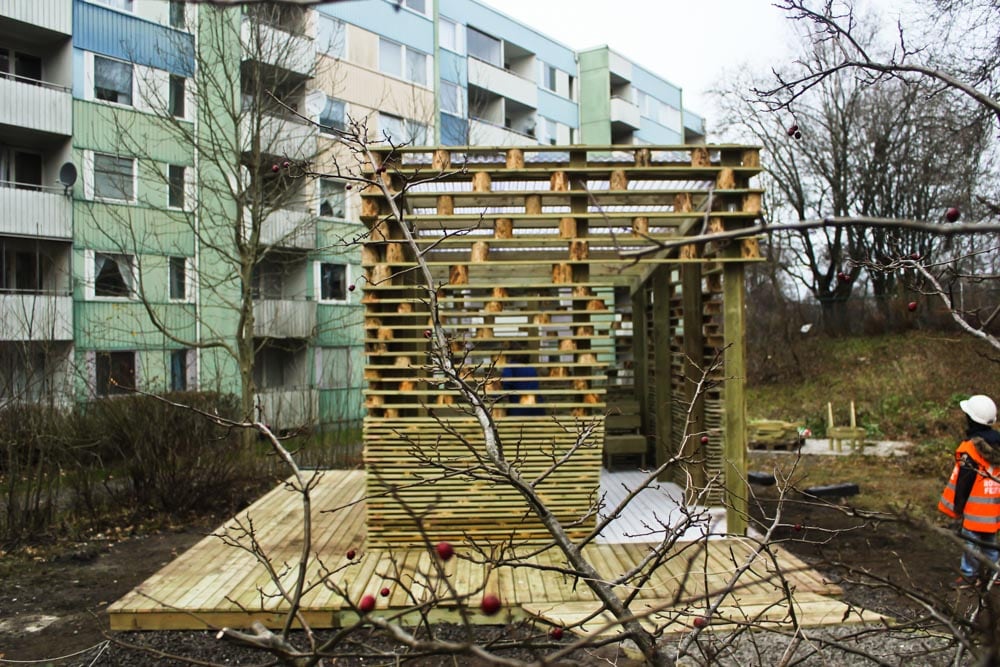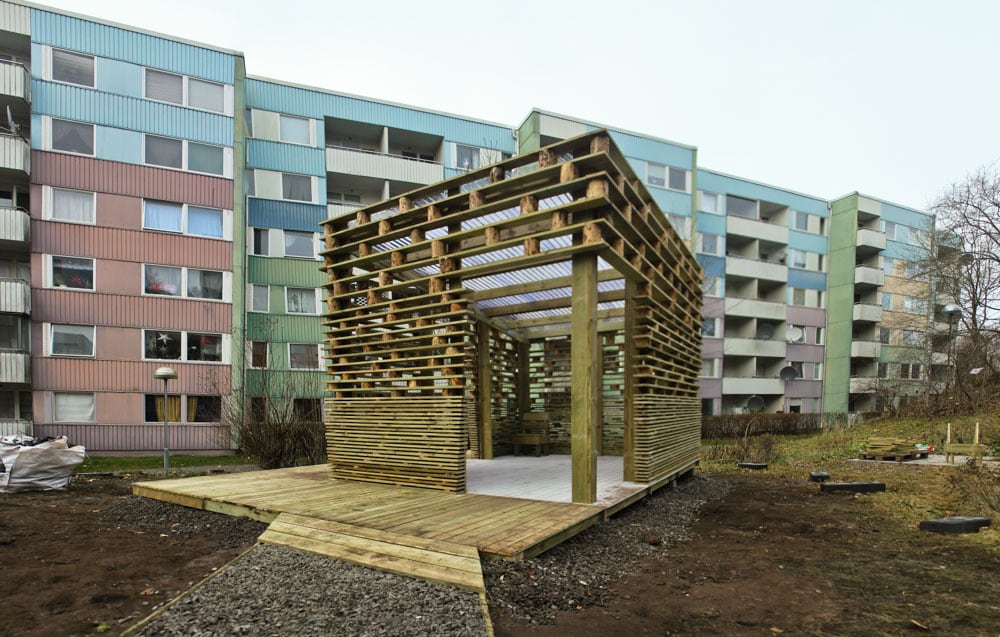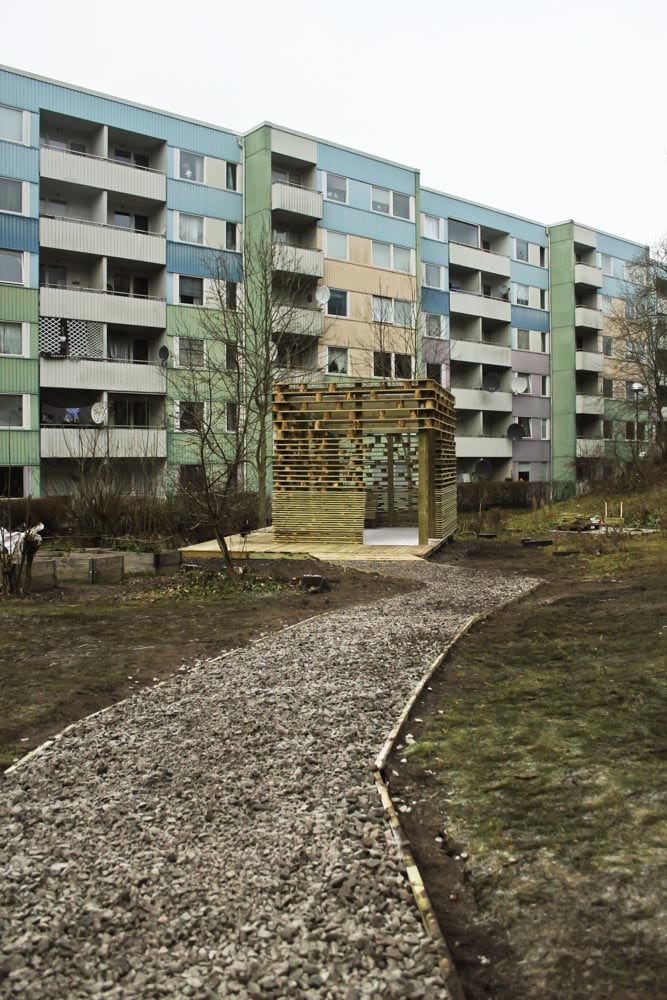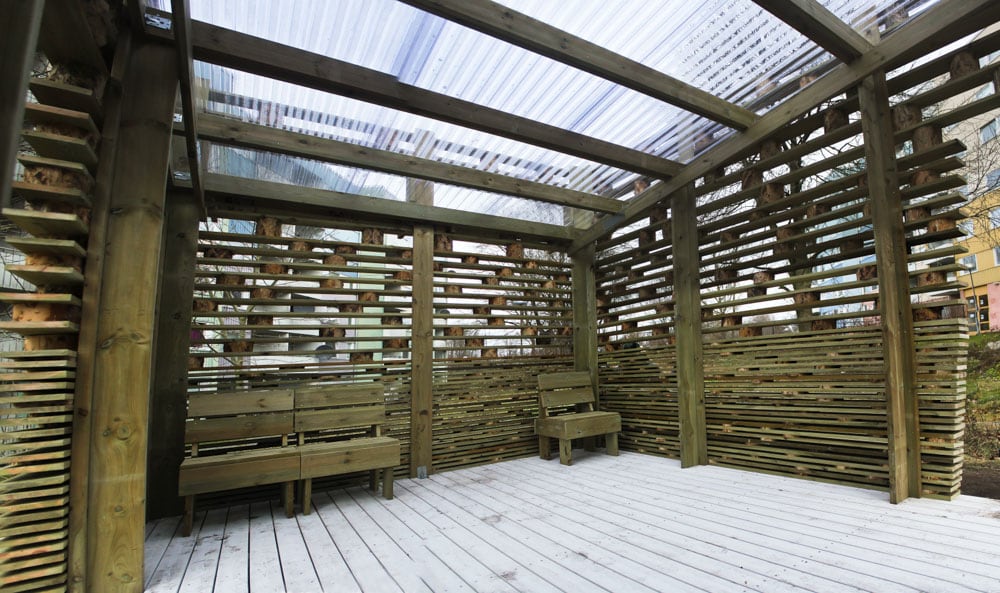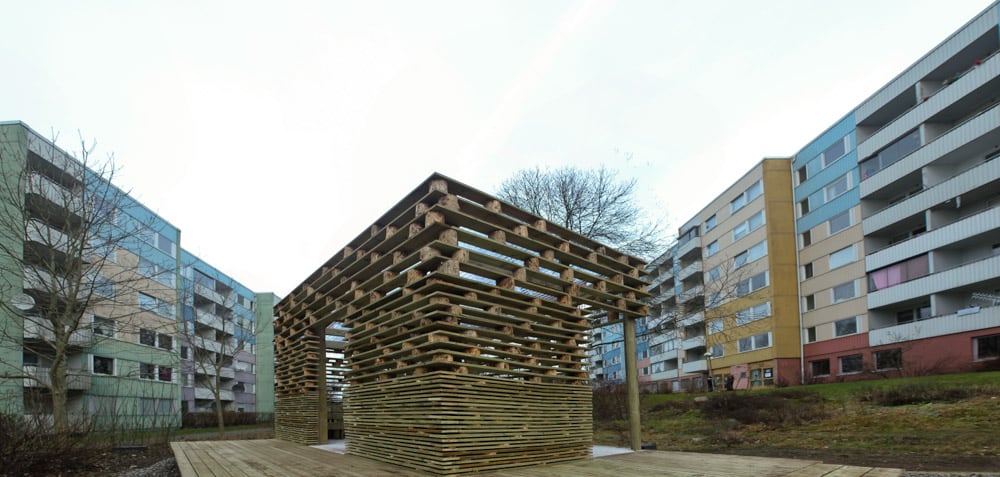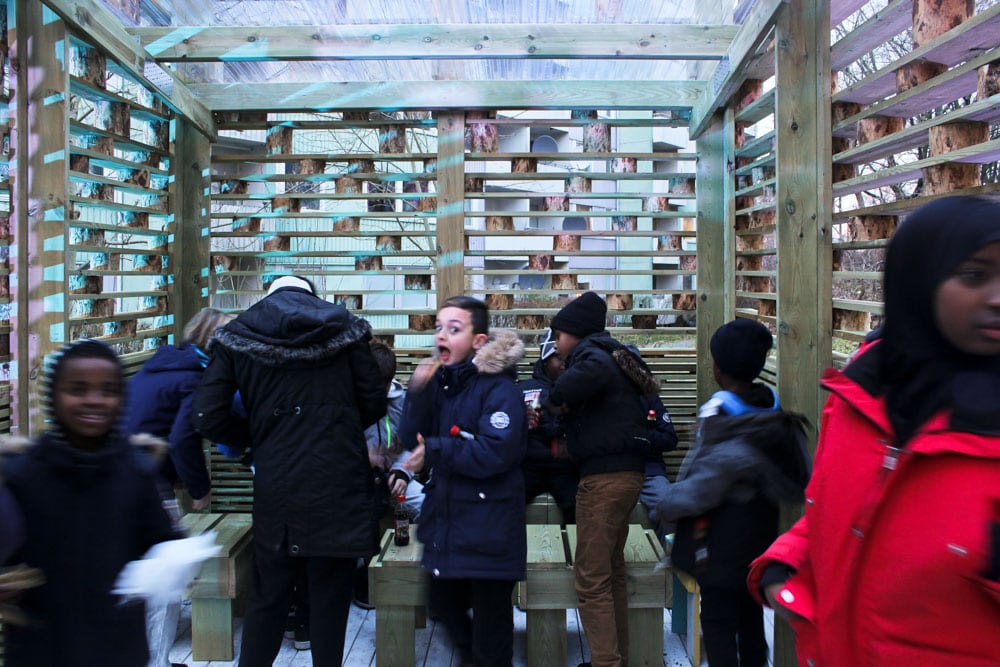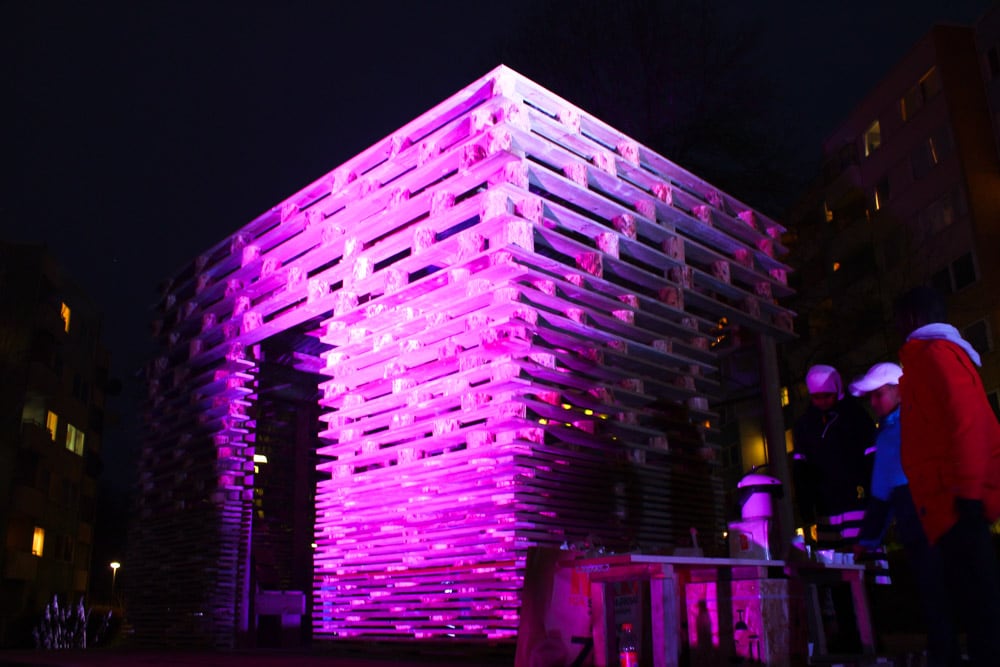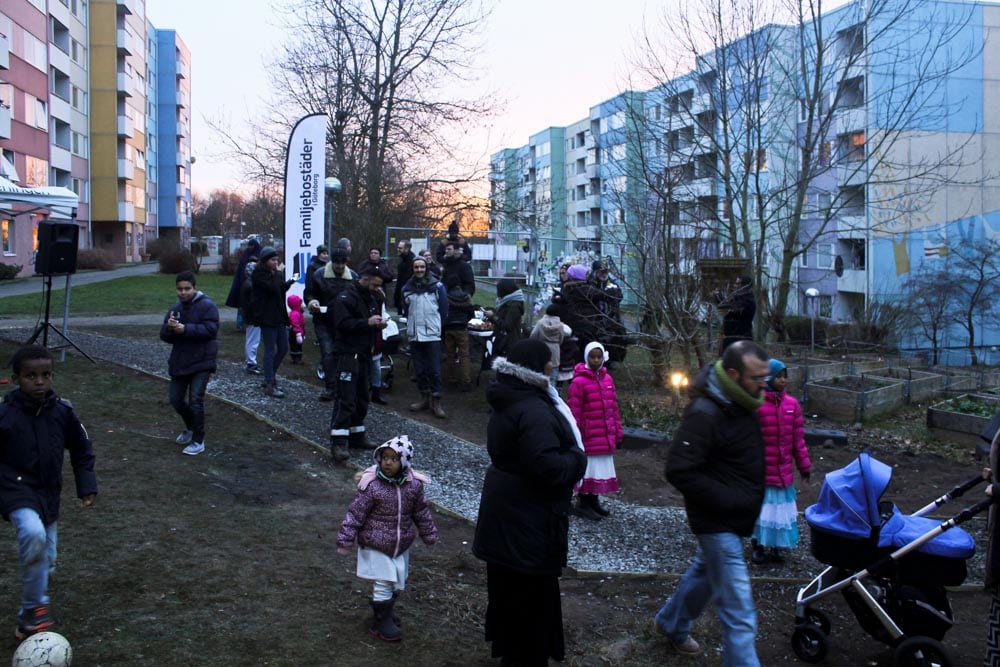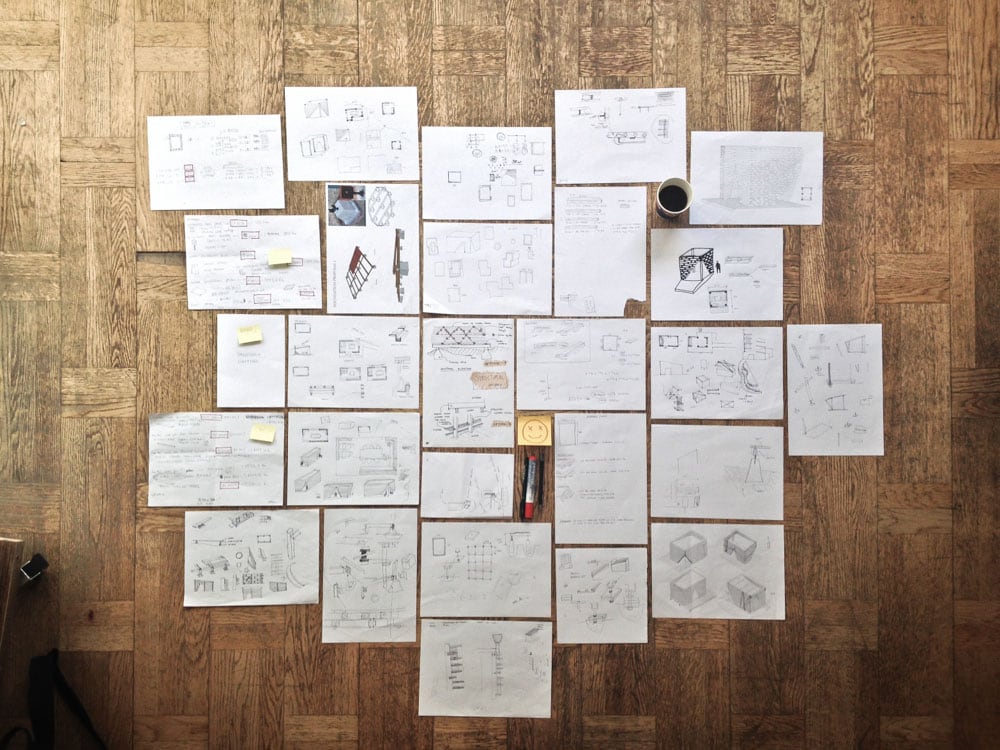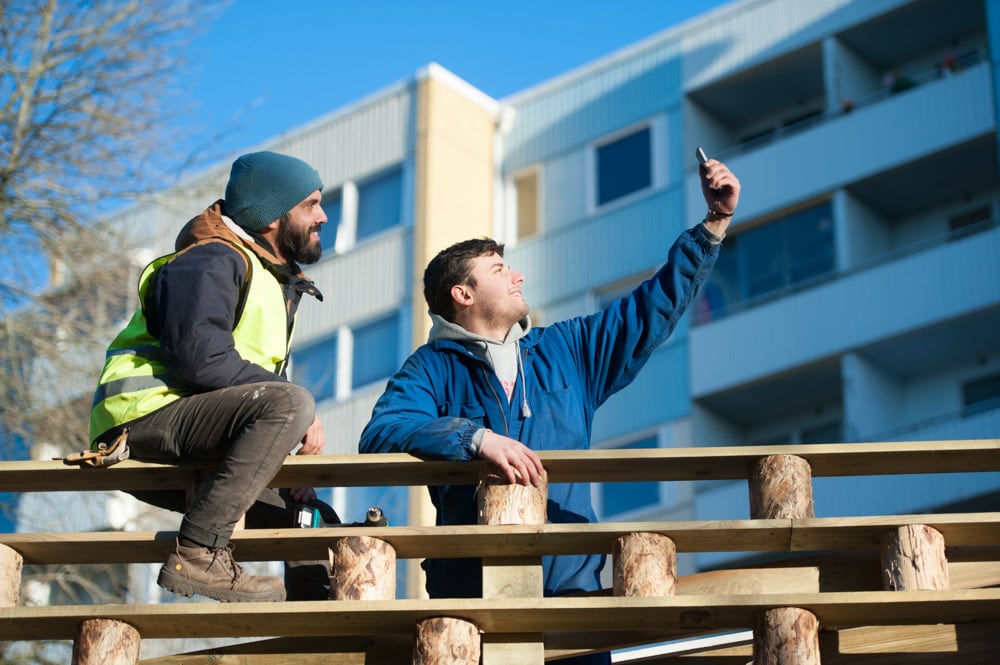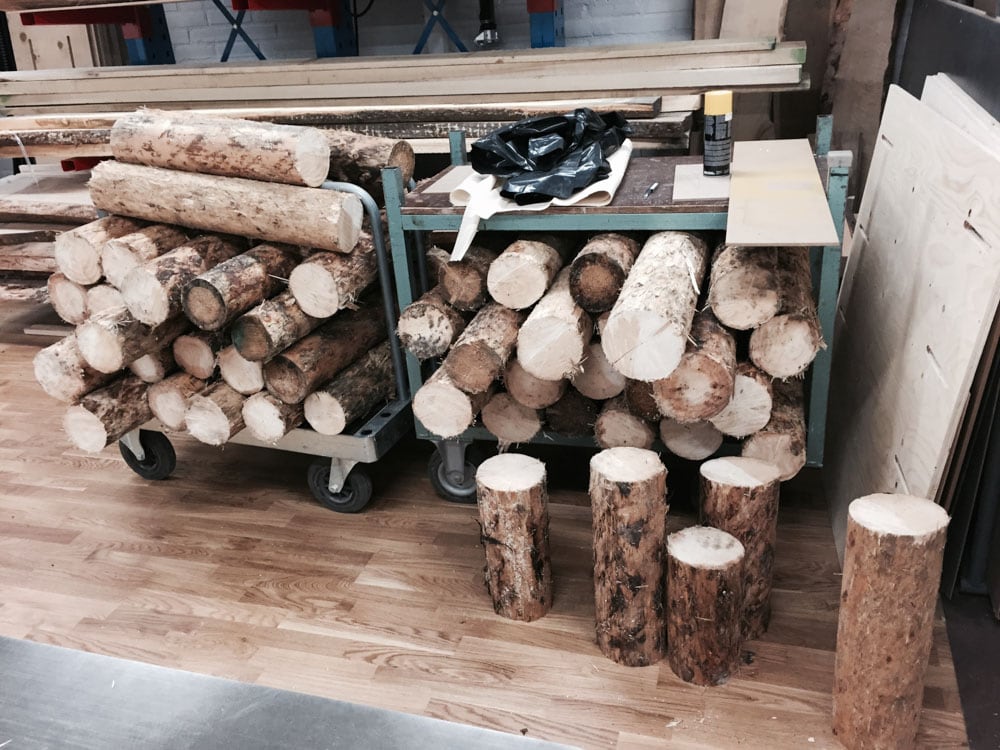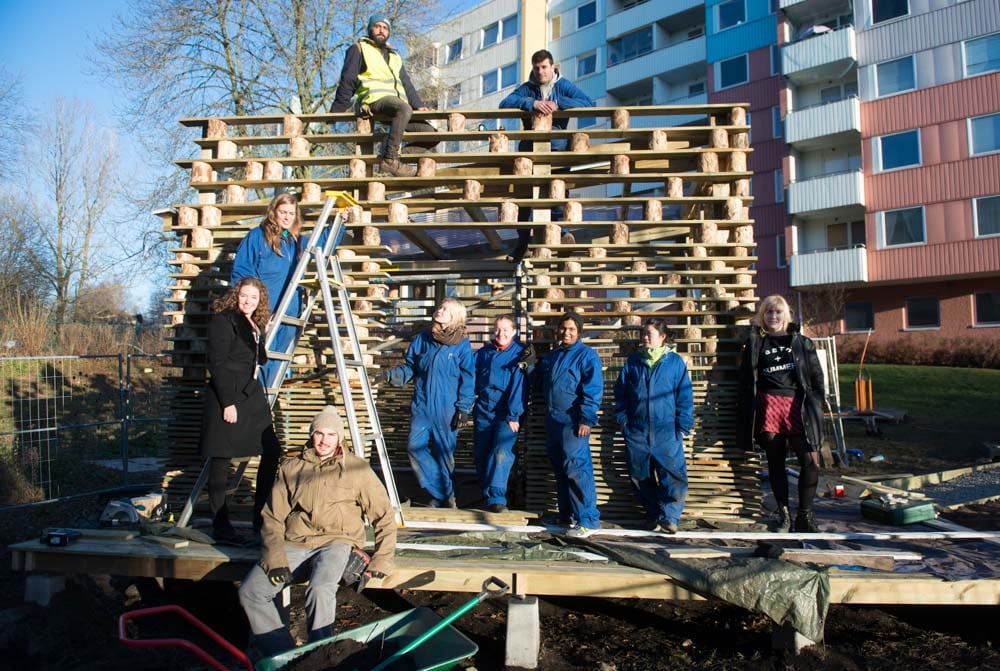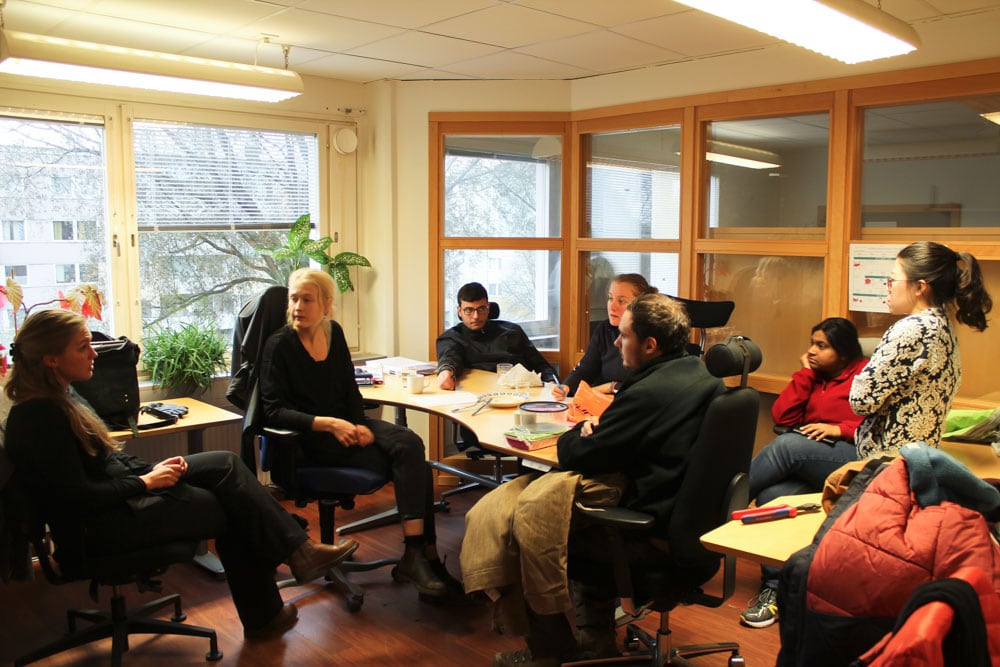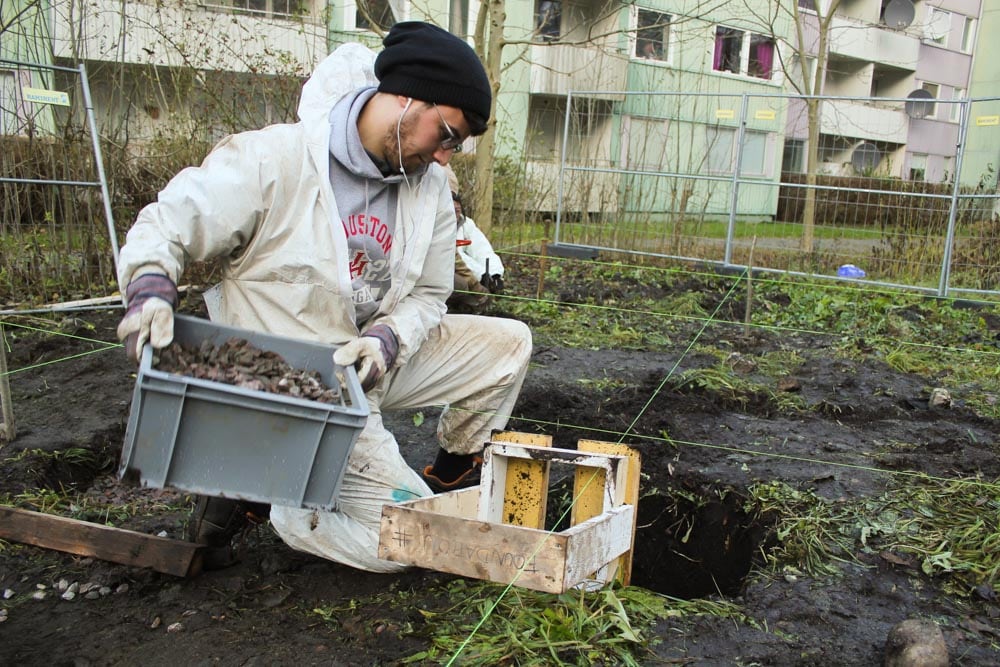415 De Paviljong project consisted in the construction of a small-scale pavilion in Siriusgatan neighbourhood, Gothenburg.
This project was developed by 6 students [from Masters Design for Sustainable Development program of Chalmers University] with the support of Colectivo Warehouse in collaboration with the Berlin based collective ON/OFF.
The main goal was to promote the participation and increase the sense of ownership of the neighbourhood inhabitants. The project was a participatory process where several groups could be involved in the design, communication and construction. The focus group was mainly the women and the youth of the community.
Project preparation
By the time that Warehouse was invited by ON/OFF to collaborate in this project, the group of students were already working on the neighbourhood, analysing it and creating direct relationships with the local community and their groups.
Through this first steps they were able to identify some common grounds between local groups and the other actors involved in the project, like the main partners Familjebostäder and Hyresgästförening, defining the future direction of the project and its main target.
The idea of building a pavilion became a reality for everyone involved, and the students started to organize everything to achieve that. The logistics and materials, the technical drawings and participatory activities and the formal meetings or informal gatherings, were assured by “team 5” during the preliminary process, supported by Emílio Brandão (Masters Director) and Samuel Carvalho (ON/OFF), and then by Colectivo Warehouse.
At this time the students were already the main mediators between all the actors involved.
The concept behind the pavilion was thought as a building for placemaking, using the construction technic as an engagement for participation, making possible the interaction between the building and the local community.
On-site Design and the Building Process
After some primary Skype meetings, Warehouse arrives in Göteborg to start the work with the students. The first goal was to give support to the group with technical drawing details and logistic organization so they could start ordering material and goods.
On the other hand it was also important to identify the right tools to motivate this inexperienced group in an intense process. It was quite handy to share with them methods to engage more local participation in the future activities so they could start to see a more practical impact of their work.
In the end of this week part of the team was already starting the site measurements and foundation works.
As a start everybody went to the site to quickly prototype a real scale relation with dimensions, and close the last modifications of the building. In-between a part of the group was testing different openings for the pavilion, as the others were already finishing the foundation works.
With the big logistic part almost solved, the team started to prepare the construction site and the working facilities, shelters and storage for materials, tools and other goods. It was important also to divide the team in smaller teams, so the work could be organized by responsible to be able to finish the pavilion in 2 weeks.
Besides the parallel activities to involve other actors, the team went to full construction mode, taking direct involvement in all the details of the practical building process.
By the end of the third week the pavillion was finished and approved, not only by the local community, but also by the municipality and the engineering company that partner up to support the technical and security issues of this future public building.
The now called 415 De Paviljong, as a reference to the local postal code and the different people involved, was inaugurated in the end of the third week, with a big party that for the first time united the people from different cultures, nationalities and backgrounds, all with the same feeling of belonging.
By employing a local unemployed builder – a very inclusive move from the financial supporters of the project – the project gain not only some extra help, but also a valuable direct communicator to the rest of the inhabitants.
Parallel Inclusive Activities
As important as the pavilion placemaking ability itself was the parallel activities that were developed during this 3 weeks to empower the appropriation and to improve the communication of this process.
The students and the local groups, with the tutors support, created a on-site communication with info-boards, all around signs and shared “fika[1]” moments. This info was written in the 4 most spoken languages of the neighbourhood so everybody could have access to the same information.
Throughout the three weeks there were also some late afternoon events to involve more people and get some inputs for the project, but above all the intention was to strengthen the ties created throughout this project.
In the last week of construction the architect Jonathan Naraine, from The Foodprint LAB joined the team for a 3 days furniture workshop with local kids and other participants, creating the interior furniture of the pavillion. He also develop it as a simple design and building technic so the participants could build more in the future.
[1] Fika is a social concept in Swedish (and Finnish) culture with the basic meaning “to have coffee“, often accompanied with pastries or sandwiches.
Team: Warehouse + Team 5
Partners: ON/OFF, Chalmers University – Masters Design for Sustainable Development, Familjebostäder, Hyresgästförening
With: Rúben Teodoro, Sebastião de Botton
Collaborators: Team 5 [Annsofi Björkman, Naji Chabarek, Alice Valinger, Xueli Ma, Giovanna Gaioni, Praveena Ashok], Mahmod El Haj (Zé), Embla Del Carmen, Emílio Brandão, Jonathan Naraine, Andreas Nielsen, Samuel Carvalho, Anders Kouru, Bea Klein, Josephina Wilson, Bergsjön Inhabitants Community

